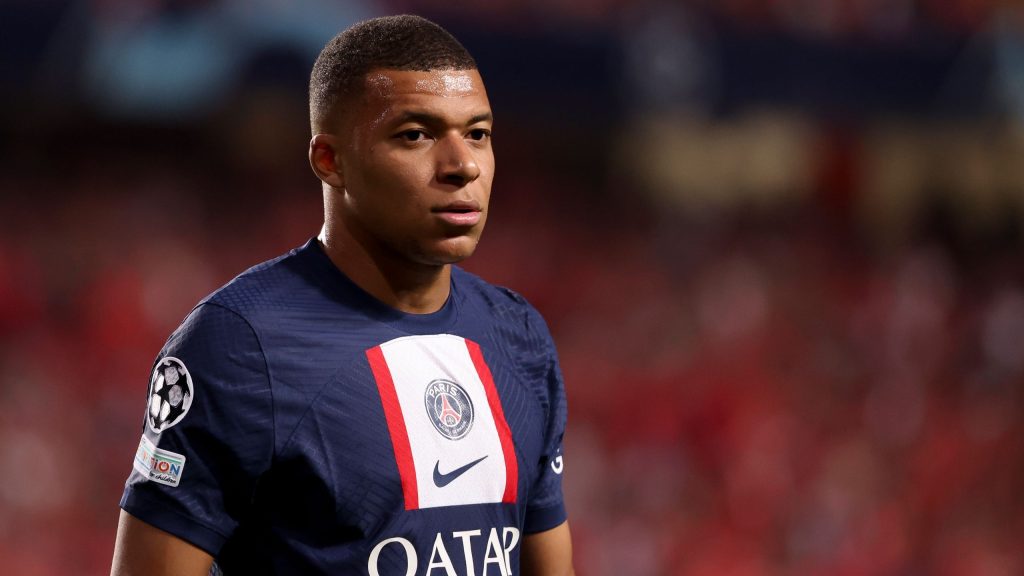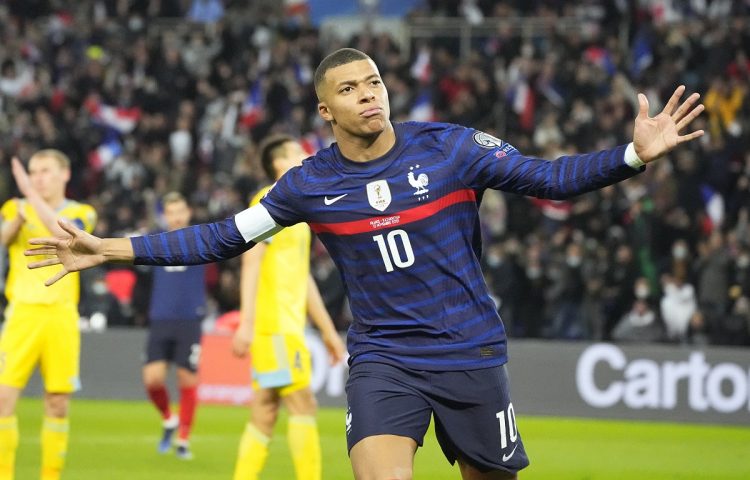Introduction: The Weight of the White Jersey
When Kylian Mbappé stepped onto the hallowed turf of the Santiago Bernabéu on July 1, 2024, for his official unveiling as a Real Madrid player, the echoes of history reverberated through the stadium. The €200 million signing—a mix of transfer fee and signing bonuses—marks the dawn of a new Galácticos era, but it also raises a pivotal question: Can the 25-year-old French phenom, alongside Vinícius Jr. and Rodrygo, truly compensate for the departure of Karim Benzema, a man who scored 354 goals in 14 seasons and redefined the role of a modern striker?
This article dissects the tactical, psychological, and cultural challenges facing Mbappé as he inherits the No. 9 jersey, analyzes Real Madrid’s post-Benzema offensive blueprint, and evaluates whether the “Mbappé-Vini-Rodrygo” trident can replicate—or surpass—the legacy of the Benzema-Cristiano Ronaldo-Gareth Bale triumvirate.
Chapter 1: The Benzema Legacy – A Tactical Void Beyond Goals
1.1 The Architect of Chaos
Karim Benzema was never merely a goal-scorer. Under Zinedine Zidane and Carlo Ancelotti, he evolved into a false 9/10 hybrid, dropping deep to link play, creating space for Cristiano Ronaldo’s diagonal runs, and orchestrating counterattacks with preternatural vision. His 2021-22 UEFA Champions League campaign—15 goals and 5 assists—was a masterclass in clutch performance, but his xGChain/90 (1.98) and progressive passes (7.3 per 90) reveal his irreplaceable role as Madrid’s tactical glue.
1.2 Leadership in the Shadows
Benzema’s off-ball leadership—pressing triggers, positional coaching for younger players like Vinícius—was equally critical. His exit leaves a vacuum not just in goals (30+ per season from 2018-2023) but in emotional stability. In the 2023 UCL semifinal against Manchester City, Benzema’s calm penalty in the 104th minute masked systemic midfield vulnerabilities—a role Mbappé has yet to prove he can fulfill.
Chapter 2: Mbappé’s Skillset – A Statistical and Tactical Autopsy
2.1 The Speed Paradox
Mbappé’s blistering pace (36.08 km/h top speed in Ligue 1, 2023) and 0.78 non-penalty goals per 90 make him a lethal weapon in transition. However, his heatmaps at PSG reveal a left-wing bias (73% of touches in the final third), contrasting sharply with Benzema’s central dominance (58% of touches in Zone 14). Can Ancelotti recalibrate his role without stifling Vinícius, who thrives in the same spaces?
2.2 The Playmaking Question
While Mbappé’s assist numbers (0.34 per 90 in 2023-24) are respectable, his chance creation (1.2 key passes/90) pales next to Benzema’s 2.1. His tendency to bypass midfield via direct dribbles (4.7 successful/90) risks disrupting Madrid’s possession rhythm, a system built on Kroos and Modrić’s metronomic control.
2.3 Defensive Liability
Mbappé’s pressing metrics (6.3 pressures/90 vs. Benzema’s 12.8) highlight a potential weakness in Ancelotti’s high-block system. With Jude Bellingham’s box-crashing role demanding defensive cover, Mbappé’s work rate could strain Madrid’s midfield balance.
Chapter 3: Tactical Reengineering – Ancelotti’s Blueprint
3.1 The 4-2-3-1 Experiment
Pre-season friendlies suggest a shift from 4-3-3 to a 4-2-3-1, with Bellingham as the shadow striker and Mbappé leading the line. This system theoretically maximizes Mbappé’s off-ball runs while granting Vinícius freedom to cut inside. However, it demands Mbappé hold up play—a skill he’s rarely showcased.
3.2 The “Dual False 9” Conundrum
Ancelotti’s flirtation with a double pivot of Mbappé and Vinícius—both drifting wide to exploit full-backs—mirrors Liverpool’s Salah-Mané dynamic. Yet, without a true target man (à la Benzema), crosses from Carvajal and Mendy (21% of Madrid’s chance creation in 2023-24) may lose potency.

Chapter 4: Psychological and Cultural Hurdles
4.1 The Pressure of Legacy
From Alfredo Di Stéfano to Cristiano Ronaldo, the Bernabéu demands not just excellence but myth-making moments. Mbappé’s 2022 World Cup final hat-trick proves his big-game mentality, but Madrid’s fanbase—infamous for whistling galacticos like Beckham and Bale—will test his resilience.
4.2 The Locker Room Calculus
Benzema’s exit leaves Sergio Ramos’ old captaincy mantle unclaimed. Mbappé’s €50 million annual salary—triple Vinícius’ wages—could breed resentment unless he replicates Thierry Henry’s seamless integration into Barcelona’s hierarchy.
Chapter 5: The Verdict – A New Dawn or a Costly Gamble?
5.1 Short-Term Risks
With Benzema gone, Madrid’s 2023-24 goalscoring dependency shifted to Bellingham (23 goals). Mbappé must immediately deliver 30+ goals to avoid overburdening the midfield—a tall order given La Liga’s deeper defensive blocks compared to Ligue 1.
5.2 Long-Term Synergy
If Mbappé adapts his game to prioritize combination play over individualism—akin to Cristiano’s evolution post-2013—the “Vini-Mbappé-Bellingham” axis could dominate Europe for a decade. However, this requires Ancelotti to replicate Zidane’s man-management genius.
Conclusion: The Unwritten Chapter
Mbappé’s Bernabéu debut isn’t just a transfer—it’s a referendum on modern football’s obsession with individual brilliance versus collective identity. While statistics and tactics frame the debate, the answer will ultimately be written in moments: a last-minute Clásico winner, a gravity-defying UCL volley, or a selfless assist to a teenage Endrick.
The ghosts of Di Stéfano and Benzema will watch closely. For Mbappé, the real challenge isn’t filling shoes—it’s carving a new path in a club where legends aren’t remembered; they’re immortalized.


































Discussion about this post